Smart materials and structures can adapt and respond to their environment in a controlled manner. These materials are characterized by their ability to change shape, hardness, or other physical properties in response to external stimuli. Examples include temperature, humidity, pH, or electric or magnetic fields. Smart materials and structures have the potential to revolutionize a wide range of industries. These include construction, transportation, healthcare, and energy.
Introduction to Smart Materials and Structures
Smart materials and structures are a relatively new area of research. The smart materials and structures abbreviation is SMAS. It has many possibilities and will allow many industries to change. Therefore it has gained a great deal of attention in recent years. These materials are characterized by their ability to adapt and respond to their environment in a controlled manner. These properties allow them to perform many impossible functions with traditional materials.
Smart materials can change their physical and chemical properties to respond to external stimuli. These materials can be divided into two main categories: active and passive. Active smart materials can respond to external stimuli. In contrast, passive smart materials can only change their properties in response to external stimuli.
The common active smart materials are shape memory alloys, piezoelectric materials, and magnetostrictive materials. Shape-memory alloys will always remember the original shape of the metal. When heated above a certain temperature, this material regains its shape. Piezoelectric materials generate electric currents when subjected to mechanical stress. Magnetostrictive materials change their shape under the influence of a magnetic field.
Examples of passive smart materials are more widespread in the construction industry. We are familiar with thermochromic materials, photochromic materials, and electrochromic materials. Thermochromic materials are mostly materials that change color when subjected to temperature changes. Photochromic materials exhibit different colors when exposed to different light intensities. Electrochromic materials are materials that change color when an electric current is applied.
Here is a PDF file on smart materials in structural engineering that you can refer to.
Types of Smart Materials and Structures
Various types of smart materials and structures can be classified according to the type of stimuli they respond to and the type of properties they change. Some common examples of smart materials in architecture are:
Shape Memory Alloys (SMA)
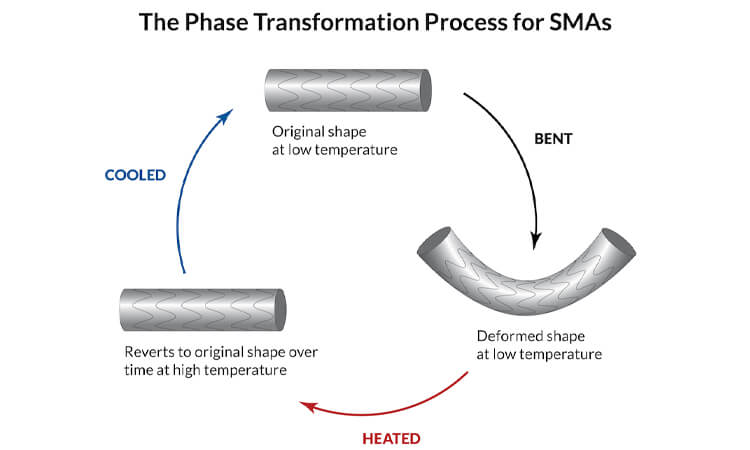
These are shape memory alloys that can return to their original shape after deformation. They exhibit a shape memory effect. This means that they can remember their original shape. They also revert to their original shape when heated above a certain temperature.
Piezoelectric Materials
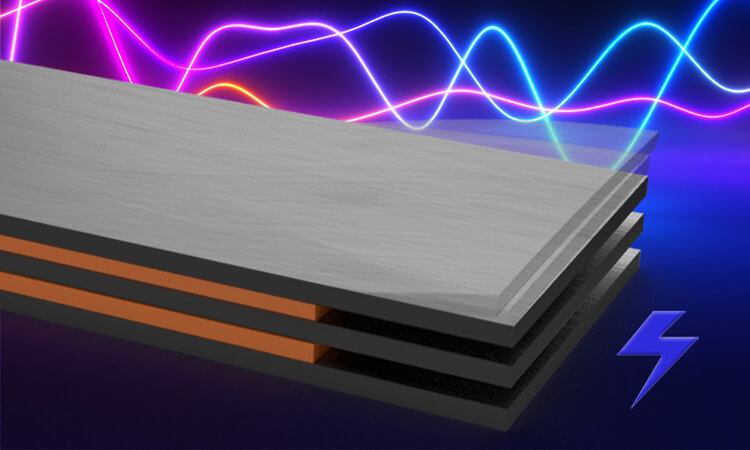
These materials generate an electric potential when subjected to mechanical stress or strain. They can also change shape when an electric field is applied to them.
Thermally Reactive Materials
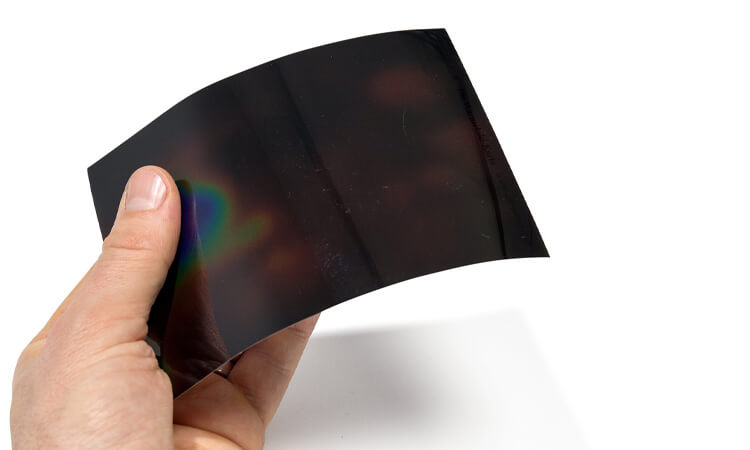
Thermally reactive materials change their properties as the temperature changes. For example, some materials become softer and more flexible when heated. Others become harder and more flexible.
Photomechanical Materials
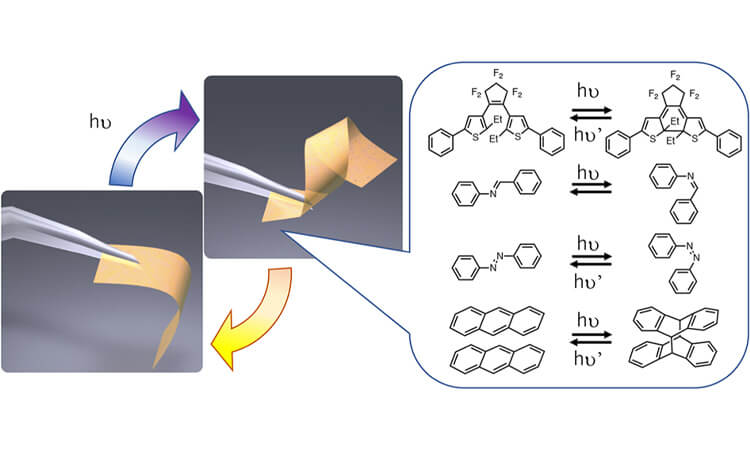
Photomechanical materials change shape as light changes. People often make them useful in optical switches and displays.
Smart Concrete
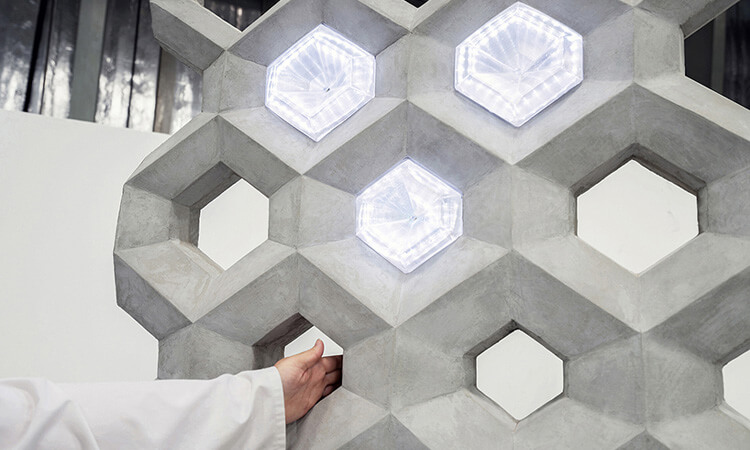
This is a type of concrete that contains sensors and actuators. The properties of this material allow it to respond to changes in the environment and perform specific functions.
Smart Textiles
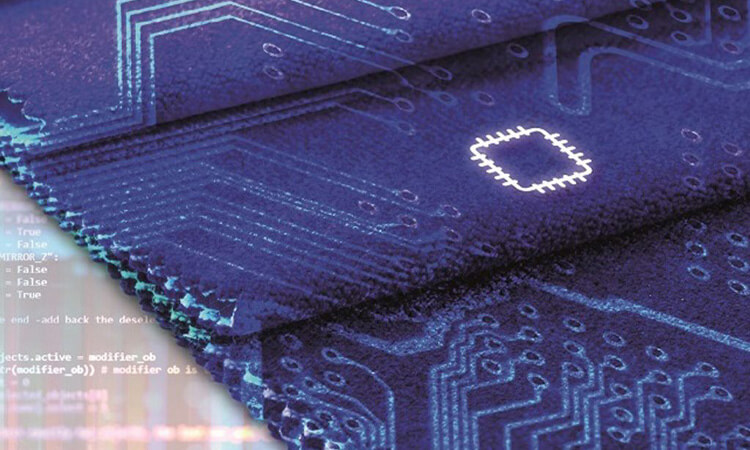
These textiles contain sensors and actuators. This allows items with this material to respond to environmental changes and perform specific functions.
Application of Smart Materials and Structures
Since smart materials and structures can sense their environment and adjust their behavior accordingly. Therefore it has a wide range of applications in various fields.
The functional materials utilize the native properties and functions of their own to achieve an intelligent action.
— Z.L. Wang and Z.C. Kang Georgia Institute of Technology
- Self-healing materials. Smart materials and structures have the potential to repair themselves when damaged. Its availability has led to a reduction in the need for maintenance. It also increases the life span of products.
- Adaptive structures. Smart materials and structures can be used to create structures that adapt to their environment. Some better-known applications are buildings that can withstand earthquakes and bridges that can repair themselves.
- Energy-efficient materials. Smart materials and structures can be used to create energy-efficient systems. It can be used as an insulating material that adjusts its properties to maintain a constant temperature. You can also use it for solar panels that track the sun to maximize energy production.
- Aerospace. Smart materials and structures can be used in aircraft and spacecraft design. They are often designed to improve efficiency and reduce weight. For example, shape memory alloys can be used to build aircraft wings to adapt to different flight conditions.
- Civil engineering. Smart materials and structures can be used to construct buildings, bridges, and other structures. The use of such materials can be effective in improving their performance and adaptability. For example, smart concrete can be used to improve the durability and structural integrity of bridges.
- Automotive. Smart materials and structures are used in various applications in the automotive industry. It is commonly used in automobile seat belt tensioners, active suspension systems, and tire pressure monitoring systems.
- Biomedical: Smart materials and structures are used for a variety of applications in the biomedical field. Examples of biomedical applications include drug delivery systems, artificial muscles, and biosensors.
- Defense. Smart materials and structures can also be used in the defense industry for different purposes. It is like camouflage, bulletproof vests, and smart weapons.
Advantages of Smart Materials and Structures
Smart materials and structures have several advantages over conventional materials and structures. These advantages make them attractive in a variety of applications.
Smartness describes self-adaptability, self-sensing, memory, and multiple functionalities of the materials or structures.
— C. S. Cai, Ph.D., P.E.
- Adaptability. Smart materials and structures can adapt and respond to their environment. This adaptability makes them useful in a variety of applications. It also makes them attractive in a wide range of applications.
- Efficiency. Smart materials and structures are often more efficient than traditional materials. This means they can perform their functions with less energy or resources. Smart materials and structures can help us reduce energy consumption and improve energy efficiency in various applications.
- Durability. Smart materials and structures are often more durable than traditional materials. They can repair themselves and adapt to changing conditions. This ability allows them to withstand wear and tear for longer periods.
- Cost-effectiveness. Smart materials and structures can help people reduce maintenance and repair costs. Therefore it is often more cost-effective than traditional materials.
- Performance. Smart materials and structures can improve the performance of various systems and devices by adjusting their behavior to respond to changing conditions.
- Versatility. Smart materials and structures have a wide range of applications. You can use it in various fields, from aerospace to other areas.
Challenges and Limitations
Although smart materials and structures may revolutionize industries in the future. However, some smart materials and structures impact factor still need to be addressed.
- Cost. Many smart materials and structures are too expensive for widespread commercial use.
- Durability. Some smart materials and structures may not be suitable for long-term use. They have a limited life span or degrade over time.
- Compatibility. Some smart materials and structures may be incompatible with certain environments or conditions. Examples include high temperatures or extremely humid environments.
- Safety. Safety issues may be associated with using certain smart materials and structures. It has the potential to produce toxic or harmful by-products.
The Future of Smart Materials and Structures
Despite the challenges and limitations, the future of smart materials and structures is bright as technology improves and the cost of developing and manufacturing smart materials and structures decreases. We will likely see an increase in the use of these materials and structures in various industries.
Conclusion
Smart materials and structures are a promising technology. It promises to change how we design and build everything from bridges and buildings to airplanes and automobiles in the future. These materials and structures can adapt to changes in their environment, increasing their efficiency and adaptability. At the same time, there are challenges and limitations in the use of smart materials and structures. But the future of this technology is bright, and we may see increasing use of these materials and structures in the future.
About Smart Materials and Structures FAQs
-
What are smart materials, and how are they different from traditional materials?
Smart materials can change their properties in response to external stimuli, such as temperature, pressure, or electric fields. Unlike traditional materials with fixed properties, smart materials can adapt and respond to changing conditions.
-
How do smart materials and structures work, and what are some of their key features?
Smart materials and structures use various mechanisms, such as shape memory, piezoelectricity, or magnetostriction, to change their properties in response to external stimuli. Their key features include high sensitivity, rapid response time, and the ability to self-monitor and self-repair.
-
How can smart materials be used in aerospace, automotive, and civil engineering applications?
Smart materials can be used in various aerospace, automotive, and civil engineering applications to improve performance, reduce weight, and increase efficiency. For example, they can be used in aircraft wings to change shape and improve aerodynamics or in cars to reduce vibration and noise.
-
What are intelligent structures, and how are they different from traditional structures?
Innovative structures incorporate smart materials or sensors to respond to changing conditions and improve performance. Unlike traditional structures with fixed properties, smart systems can adapt and respond to changing loads, temperatures, or other factors.
-
How can smart materials and structures be used in robotics and automation?
Smart materials and structures can be used in robotics and automation to improve performance, reduce weight, and increase efficiency. For example, they can be used in robotic grippers to improve grasping and manipulation capabilities or in robotic exoskeletons to enhance strength and mobility.








